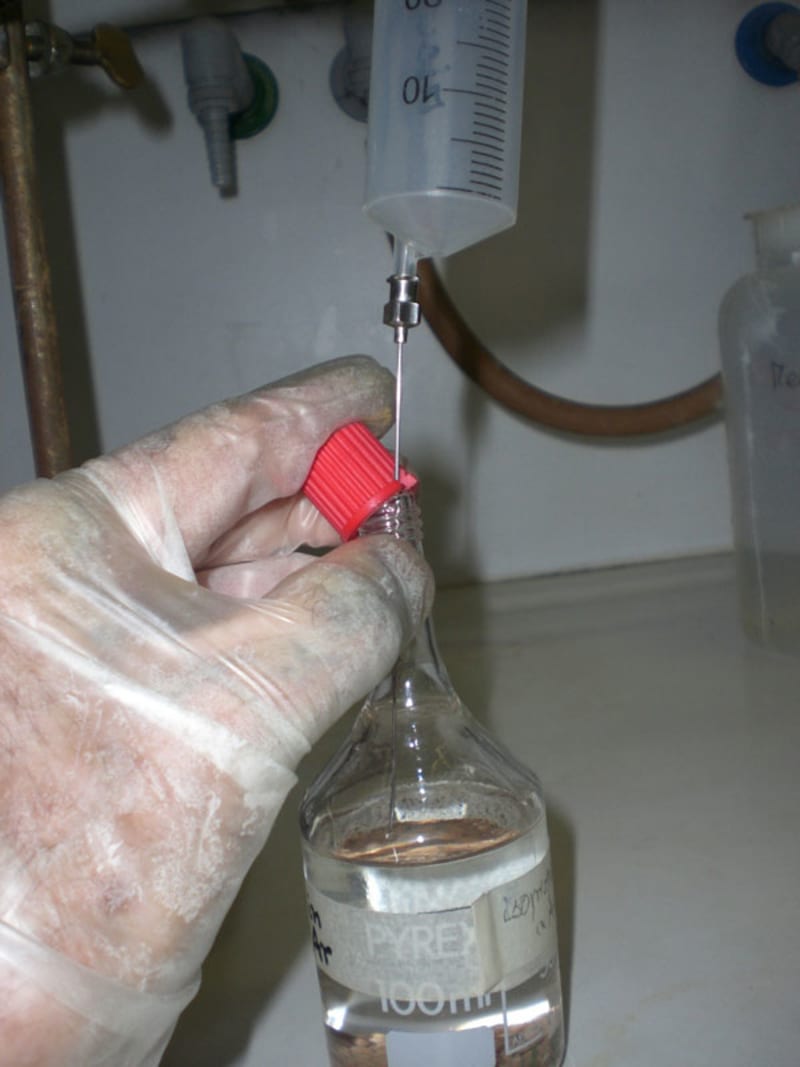A laboratory chemical stays most of its lifetime on a shelf, in a closed container, which is opened when it is necessary to take out part of its contents. Generally, partial removal is carried out by pouring, if the chemical is a liquid or a powder, or by means of a spatula after having tilted the container, if the chemical is a little-flowing solid. Both operations allow the exchange, by gravity or diffusion, of the atmosphere internal to the container with the laboratory atmosphere, containing the reactive species oxygen, water and carbon dioxide. One or more of these species first adsorb on the surface, then absorb, and then possibly react with the contents, degrading anyway the quality of the chemical by their mere presence (purity decrease) plus, generally, by their reaction products (explosive peroxides, products of hydrolyses or carbonations).
This entails discarding lots of chemicals, even stored in unopened containers, due to the lack of safety and/or reliability of the purity indicated on the label, after the so-called expiry term (usually 3-12 months). With consequent intensive waste of time and money, plus environmental contamination.
The easy cure is to get and keep the chemical under an atmosphere internal to the container as UNINFLUENT (because a solubility MUST exist) as possible. In practice, of argon (nitrogen is after all less convenient), like most of the packaged foods.
Such treatment requires the choice of a suitable
(A) material for
(1) the container: either high density polyethylene, or soda-lime glass, or borosilicate glass are satisfactory for most of the cases; fluorinated polymers for the most aggressive substances;
(2) the cap, which MUST be gas-tight; ideally should be a single piece of high density polyethylene (HDPE) or polytetrafluoroethylene (PTFE), which to my knowledge is rarely available currently. I am using an “inverted hat” of PTFE compressing an O-ring of suitable material against the rim of the GL X (X=12, 14, 18, 25) screw neck by means of the corresponding GL screw cap;
(B) procedure for
(1) taking out a portion of the contents. Gas-tight syringes and argon-filled pipettes are suitable for liquids, KEEPING the container vertical and the cap open only as much as necessary to allow the needle or the pipette tip to enter; for solids, an L-shaped spatula with the same precautions to minimize the laboratory air entering the container;
(2) restoring the internal atmosphere after each withdrawal. Large-volume (60-120 mL) plastic syringes are excellent storage and source of the argon necessary to flush the container, see Fig.1.
What's outlined above greatly extends the usability of laboratory chemicals and samples, making unnecessary periodic purifications, let alone disposal. Saving overall time, money, materials, environmental pollution, improving safety and reliability of measurements and reactions carried out with argon-saturated chemicals. The method, born long ago as a semimicro method, currently appears to be of standard size for chemical laboratories, due to the increase of instrumental sensitivity.?
Like this entry?
-
About the Entrant
- Name:Bruno Lunelli
- Type of entry:individual
- Software used for this entry:none
- Patent status:none

